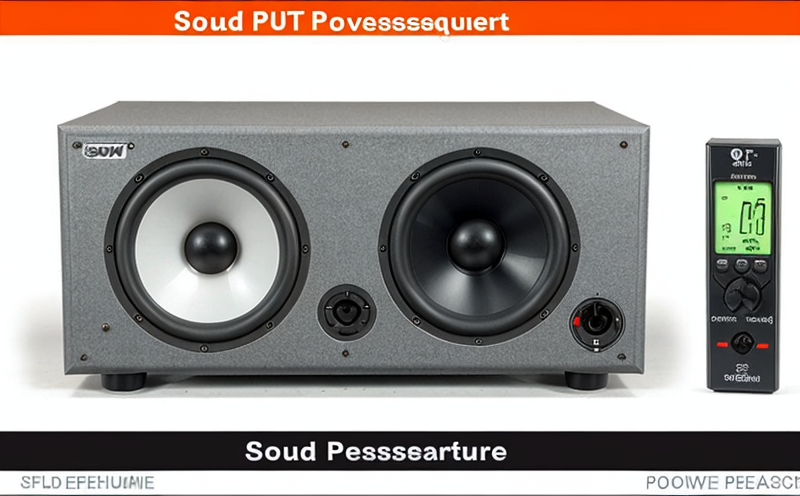ISO 3747 Determination of Sound Power Using Reference Comparison Method
The ISO 3747 standard is a widely recognized method used to determine sound power levels in environments where conventional noise measurement techniques are not feasible. This method, known as the reference comparison method, involves comparing the noise generated by a source with that produced by calibrated reference sources under controlled conditions.
One of the primary advantages of this approach is its ability to measure sound power without the need for precise room acoustics or reverberation chamber measurements. Instead, it relies on the measurement of sound pressure levels in an open space using a suitable microphone array and subsequent comparison with reference data.
The process begins by setting up the test environment according to ISO 3747 guidelines. This includes placing the source under test (SUT) in a reverberation room or a similar controlled area where reflections from the walls, ceiling, and floor are minimized. The microphone array is then positioned at specific locations around the SUT to capture sound pressure levels.
Once the data is collected, it is analyzed using appropriate software that applies algorithms defined in ISO 3747. These algorithms correct for various factors such as absorption by materials in the room and the presence of background noise. The corrected sound pressure levels are then compared against reference curves to determine the sound power level emitted by the SUT.
The accuracy of this method depends heavily on proper setup and calibration of equipment, including microphones, preamplifiers, and data acquisition systems. It is crucial that all instruments used adhere strictly to international standards (e.g., ISO 9614-2 for microphone specifications) to ensure reliable results.
Another important aspect of this service involves ensuring compliance with relevant regulations and guidelines set forth by bodies such as the International Organization for Standardization (ISO). Compliance ensures that tests conducted meet industry best practices, thereby maintaining high standards across various sectors like manufacturing, construction, and research.
In summary, ISO 3747 provides a robust framework for determining sound power levels in challenging environments. By leveraging this standard, organizations can gain valuable insights into the acoustic performance of their products or facilities, which is essential for meeting regulatory requirements and improving overall product quality.
Scope and Methodology
The scope of ISO 3747 encompasses various applications where precise sound power measurement is required but traditional methods are impractical. This typically includes large open spaces, areas with complex geometries, or environments where reverberation time cannot be accurately controlled.
The methodology involves several key steps:
- Setting up the test environment according to ISO 3747 specifications.
- Positioning the SUT and microphone array in the correct locations.
- Collecting sound pressure level data using calibrated microphones.
- Analyzing collected data with appropriate software.
The analysis step is critical as it involves correcting raw data for various factors such as room absorption, background noise, and instrument response. This ensures that the final results accurately reflect the true sound power level emitted by the SUT.
It's important to note that while ISO 3747 provides a standardized approach, actual implementation may vary based on specific project requirements and site conditions. Our team of experts works closely with clients to tailor each test setup to meet individual needs while adhering strictly to international standards.
International Acceptance and Recognition
The ISO 3747 standard has gained widespread acceptance across numerous industries due to its reliability and accuracy. It is frequently used in sectors such as automotive manufacturing, aerospace engineering, architectural acoustics, and environmental noise control.
Aerospace manufacturers often use this method during early stages of product development to evaluate engine noise levels or structural vibrations within aircraft cabins. Automotive companies apply ISO 3747 when testing vehicle interiors for sound insulation properties before final design iterations. Similarly, architects incorporate these measurements into their designs to ensure spaces meet acoustic comfort standards.
Environmental protection agencies also rely on this standard to assess industrial sites and public areas affected by noise pollution. By comparing measured values against established limits from regulatory bodies like the World Health Organization (WHO), decision-makers can enforce stricter controls or promote quieter alternatives.
The recognition of ISO 3747 extends beyond individual countries; it forms part of broader international initiatives aimed at reducing global noise levels and improving public health outcomes. As such, compliance with this standard not only enhances internal processes but also contributes positively to external regulatory frameworks.
Use Cases and Application Examples
This service finds application in diverse fields including transportation, manufacturing, construction, healthcare, and education. For instance, airlines may employ ISO 3747 during cabin design phases to optimize sound insulation between passenger compartments and galley areas. In contrast, schools might utilize this methodology when selecting appropriate materials for classroom walls to minimize reverberation times and enhance speech intelligibility.
Manufacturers of heavy machinery frequently use ISO 3747 to assess the noise generated by their equipment during operation. This allows them to identify potential issues early in production cycles so that necessary adjustments can be made before products reach market stages. Hospitals also benefit from this service by ensuring staff workspaces remain quiet enough for effective communication and patient recovery.
Construction firms apply ISO 3747 when planning new residential developments or office complexes to ensure compliance with local noise regulations. By adhering strictly to these standards, developers can create healthier living environments that support better quality of life among residents.
In summary, the versatility of ISO 3747 makes it an indispensable tool for professionals across multiple disciplines seeking accurate sound power measurements under challenging circumstances.





